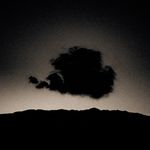- Home
- Lightroom Classic
- Discussions
- Develop settings not copying properly
- Develop settings not copying properly
Copy link to clipboard
Copied
I use LrC for editing and organizing my ARW photos. I use Topaz Photo AI for denoise and sharpening; it produces a DNG file from the original ARW file. I then do Develop editing on the DNG file.
On occasion, I edit the DNG in PS, primarily to remove distractions; PS produces a TIFF when I save back to LrC. On occasion, I find I need to do some more editing on the TIFF. I can copy the mask settings from the DNG and paste them to the TIFF. However, the masks don't really copy over properly. Something, usually part of a brush, always seems to be missing. I say always, but my sample size is only 3.
Is this a bug? Or am I doing something wrong?
 1 Correct answer
1 Correct answer
[This post contains formatting and embedded images that don't appear in email. View the post in your Web browser.]
I copied the masks from the DNG to the TIFF. Then I used Overlay Mode: White On Black and enabled just one of the mask Bird's components at a time (Brush 1, Brush 2, Object 1) to see what's causing the difference. The brush masks are identical, but it's the Object 1 mask that is different, especially on the bottom of the tail:


Looking more closely at the part of the DNG and TIFF
...Copy link to clipboard
Copied
Are the images in portrait orientation? There are known problems with that.
Otherwise, we'll need a lot more detail. The most efficient way of troubleshooting this is to select one of the problem DNGs and do Metadata > Save Metadata To File. Then upload the DNG and corresponding TIFF to Dropbox, Google Drive, or similar, and post the sharing link here.
Copy link to clipboard
Copied
Copy link to clipboard
Copied
[This post contains formatting and embedded images that don't appear in email. View the post in your Web browser.]
I copied the masks from the DNG to the TIFF. Then I used Overlay Mode: White On Black and enabled just one of the mask Bird's components at a time (Brush 1, Brush 2, Object 1) to see what's causing the difference. The brush masks are identical, but it's the Object 1 mask that is different, especially on the bottom of the tail:


Looking more closely at the part of the DNG and TIFF where the Object masks differ (with no settings applied):

there are small differences in color and relative contrast between that part of the bird and the background. This is evidently causing the AI model for Object to consider that part of the bird in the TIFF to be more similar to the background than the rest of the bird. The AI models will produce identical outputs only when given identical inputs.
You could use the Copy Settings plugin's Synchronize Settings command to copy the masks, using the Original AI Masks option:
This copies the exact mask computed for the DNG without re-evaluating the AI model for the TIFF. I verifed that this does indeed yield the exact same mask on the TIFF.
Copy link to clipboard
Copied
Thanks very much for the answer! In retrospect, it makes perfect sense that the AI object defined for the original DNG would be different after editing of that DNG. I must assume that the same sort of difference would happen with other AI masks like subject.
I"m not yet sure that I do this enough to need the plugin, but at least I know it exists.
Copy link to clipboard
Copied
Yeah, that feature is most useful to people doing time-lapse series where they want to apply the same exact mask to hundreds of photos taken by an unmoving camera.
Copy link to clipboard
Copied
Ai IS NOT taking in consideration any edit you have done to the image...it used to be the case before LrC 11.3 but now Ai "looks" the image unedited (actually with only a bit of auto exposure applied) then makes the selection.
So Ai will get you the same selections with or without edits ON THE SAME FILE.
As @John R Ellis eloquently put it "The AI models will produce identical outputs only when given identical inputs."
In your case the TIFF and the DNG were not the same.





